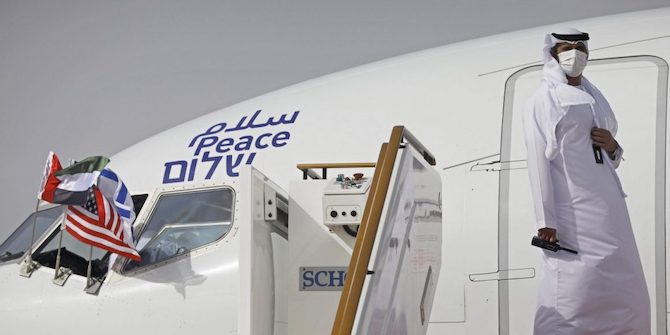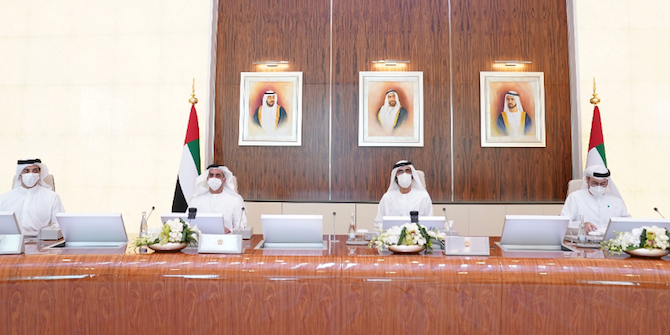by Athanasia Stylianou Kalaitzi, Samer Kherfi, Sahel Al-Rousan & Marina-Selini Katsaiti

The impact of exports on economic growth has been widely examined in the development literature. In particular, exports of goods are found to have a positive impact on economic growth for many countries around the world; however, evidence from the GCC region shows that exports are not the engine of long-run economic growth. For example, in the case of the UAE, exports of goods contribute positively to economic growth, but only in the short run. Similar evidence has been documented for other countries whose exports comprise mainly primary goods, as this category of exports is associated with lower growth.
For this reason, our LSE Middle East Centre collaboration project with American University of Sharjah initially investigated the short- and long-run causal effects of non-primary exports on economic growth in the UAE. The evidence shows that causality runs from non-primary exports to economic growth, but only in the short run. However, this result does not mean that further expansion of non-primary exports would not contribute to the UAE’s long-run economic growth, as aggregate measures may mask the impact of export components in some cases. Therefore, our next step was to identify the sub-categories that contribute to both short- and long-run economic growth.
From 1981 to 2019, there is evidence of a structural shift from basic low-tech manufactured exports to more skill-intensive manufactured exports (Figure 1). In particular, the share of manufactured goods and miscellaneous manufactured articles (basic low-technology manufactures) in non-primary exports decreased from 54.7% in 1981 to 40.5% in 2019. In contrast, the share of chemicals increased from 4.6% in 1981 to 10.1% in 2019, while machinery and transport equipment increased from 40.6% in 1981 to 49.3 in 2019 (skill-intensive manufactures).

In addition, the GDP share of the above export categories, which were estimated to be less than 1% in 1981, increased significantly in 2019 (Table 1). During the same period, GDP increased at an average growth rate of 3.3%, which was higher than that of high-income countries (2.6%). The question that arises here is whether these export categories are the source for further economic growth in the UAE and, if so, which of these categories contributes more to long-run economic growth.
| Chemicals & Related Products | Machinery & Transport Equipment | Manufactured Goods (classified by material) | Miscellaneous Manufactured Articles | ||||
|---|---|---|---|---|---|---|---|
| 1981 | 2019 | 1981 | 2019 | 1981 | 2019 | 1981 | 2019 |
| 0.1% | 3.2% | 0.6% | 15.5% | 0.4% | 5.9% | 0.5% | 6.8% |
Table 1: Non-Primary Exports’ Share of GDP. Author’s calculations based on data taken from the World Bank-World Development Indicators and UNCOMTRADE Database
To answer this question, we used advanced econometric techniques to model the economy. In particular, three sub-categories of non-primary exports, 1) chemical and related products, 2) manufactured goods and miscellaneous manufactured articles, and 3) machinery and transport equipment, are modelled together with domestic investment and imports of goods and services, aiming to examine their separate causal effect on the UAE’s economic growth.
Our empirical results show that exports of chemicals and related products cause economic growth in the short run, while a bi-directional causal relationship exists between machinery and transport equipment exports and economic growth. In the long run, machinery and transport equipment exports cause economic growth, and, in turn, economic growth causes further expansion, confirming the existence of circular causation. Therefore, the shift from basic low-technology manufactured exports to more skill-intensive manufactured exports contributes to long-run sustainable economic growth in the UAE.
This blog post is part of the LSE Academic Collaboration with Arab Universities project, in collaboration with the American University of Sharjah, Export Composition and Economic Growth in the UAE.






